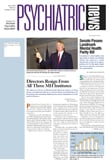Sure, many people convicted of drunken driving have an alcohol problem. Or as teens would put it: Duh! But what kind of a problem is it, really?
More often than not it’s a case of getting intoxicated or being dependent on alcohol, a study reported in the October Archives of General Psychiatry suggests. What’s more, drunken drivers often abuse drugs besides alcohol, and not a few of them have other kinds of psychological problems too, the researchers note.
The study was conducted by Sandra Lapham, M.D., and coworkers at the Behavioral Health Research Center in Albuquerque, N.M.
Between 1994 and 1997 Lapham and her team used trained interviewers to assess various psychiatric disorders in 1,105 subjects who had been convicted of drunken driving in the Albuquerque area. The subjects were between 23 and 54 years of age and included 612 women and 493 men.
The Diagnostic Interview Schedule, which the interviewers used, is structured and designed for use by lay interviewers; its levels of validity and reliability with general population samples vary between good and acceptable. The DIS determines symptoms of disease, diagnoses, and age when the subject met criteria for the diagnosis corresponding to the DSM-III-R. Factors and disorders assessed for the present study included rates of lifetime and 12-month alcohol and drug abuse and dependency, major depressive disorder, dysthymic disorder, generalized anxiety disorder, posttraumatic stress disorder, and antisocial personality disorder.
Eighty-five percent of the women and 91 percent of the men, the researchers found, had lifetime alcohol-use disorder (either abuse or dependence), suggesting that most drunken drivers have alcohol problems that are long-standing. What’s more, 30 percent of the women and 35 percent of the men had a 12-month diagnosis of actual alcohol dependency, implying that a substantial number of drunken drivers are dependent on alcohol.
As for abuse of, or dependence on, drugs other than alcohol, 26 percent of the women and 30 percent of the men had a lifetime drug dependence of some sort. Moreover, 28 percent of the women had a lifetime major depressive disorder, 27 percent a lifetime posttraumatic stress disorder, and 11 percent a lifetime dysthymic disorder, Lapham and her colleagues found. Fifteen percent of men had a lifetime antisocial personality disorder, 13 percent a lifetime major depressive disorder, and 12 percent a lifetime posttraumatic stress disorder, the researchers also discovered. Drunken drivers, it thus appears, often have psychological problems besides the abuse of alcohol and other drugs.
In short, it looks as if drunken drivers should be screened not just for alcohol and drug use, but for other psychiatric disorders as well, Lapham and her team concluded. Detection, they wrote, “is particularly important for women, who are more likely to experience psychiatric comorbidity and less likely to seek help for drinking problems.”
Detecting various psychological problems in drunken drivers would benefit not just them but the public, George Woody, M.D., asserted in an editorial accompanying the report. Woody is a psychiatrist at the Philadelphia Veterans Administration Medical Center and a professor of psychiatry at the University of Pennsylvania. “Persons driving under the influence,” he wrote, “have long been known to account for a disproportionate number of automobile accidents and deaths. [Thus] the high number of other substance use disorders found among the subjects in this study is likely to magnify these dangers.”
“Relationships between substance use and driving. . .have been studied, and it has been found that they impair driving skills to varying degrees depending on the type of drug/substance and the amount taken,” Woody said in an interview with Psychiatric News.
Psychiatric News also asked Woody whether the other psychiatric disorders that drunken drivers often have affect their ability to drive. The effect of major depression on driving ability or of posttraumatic stress disorder on driving ability has not been studied very well, he said. The same applies to antisocial personality disorder and driving skills, he added, although “one might speculate that the impulsiveness associated with antisocial personality disorder might be associated with more aggressive driving.”
